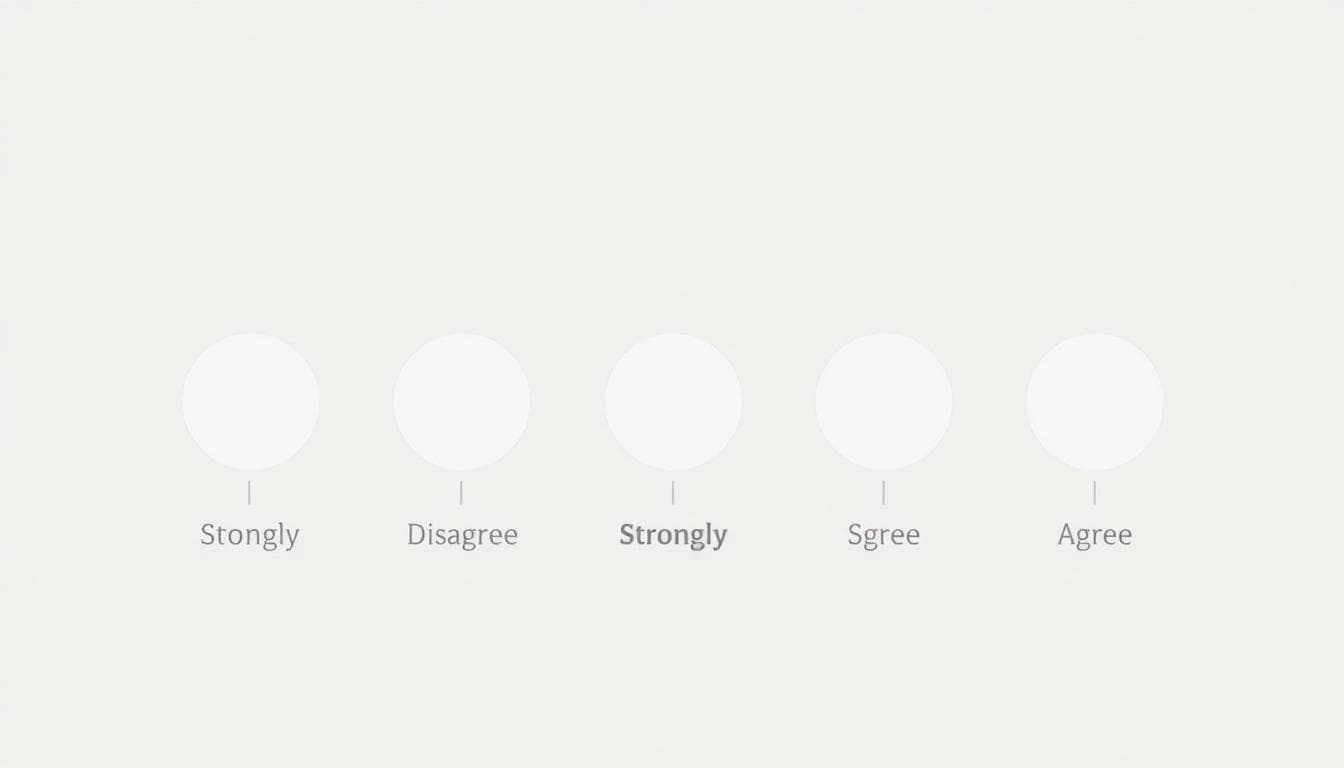Likert Scale Template: Free Survey Rating Examples
Staff Writer • January 4, 2025 • Uncategorized, marketing, survey

Likert scale templates are online surveys that ask people to rate their opinions. They range from "Strongly Agree" to "Strongly Disagree" with choices in between. You don't need PDF, Excel, or Word to use them.
There are different types of Likert scales, like 5-point and 7-point scales. They're great for many things, like checking customer happiness, getting feedback from employees, and evaluating events. Formplus makes it easy to create your own Likert scale surveys without needing to know how to code.
Key Takeaways
- Likert scale templates provide pre-made survey rating examples for collecting data on opinions and attitudes
- They offer various scale options, such as 5-point and 7-point scales, suitable for different survey purposes
- Formplus provides a user-friendly platform to create custom Likert scale surveys without coding knowledge
- Likert scale templates streamline the survey design process and improve data collection efficiency
- These templates are widely used across industries, including customer feedback, employee engagement, and market research
Understanding Likert Scale Templates and Their Purpose
Likert scales are a common tool for measuring opinions and attitudes in surveys. They offer a range of choices, from strong agreement to strong disagreement, with a neutral option in the middle. Using Likert scale templates, researchers and businesses can get detailed insights. These insights help them make better strategic decisions.
Definition and Basic Components
Likert scales aim to measure how strongly people feel about certain statements or questions. They have 5 to 7 response options, like "strongly agree" and "strongly disagree." This lets people show how much they agree or disagree with a statement.
Types of Likert Scale Ratings
- 4-point Likert scale: This scale has no neutral option, making it quick for gauging opinions.
- 5-point Likert scale: The most common, it has a neutral option in the middle.
- 7-point Likert scale: It offers more detailed options, capturing nuanced views.
- 10-point Likert scale: This scale has the most detailed options, used to measure intensity or frequency.
Benefits of Using Likert Scales in Surveys
- Improved data quality: Likert scales help collect quantifiable data from qualitative inputs.
- Ability to capture nuanced opinions: The range of options allows for more detailed and accurate feedback.
- Ease of use for respondents: The familiar format makes Likert scales easy to complete.
- Applicability across disciplines: Likert scales are used in psychology, sociology, and market research.
By using Likert scales, businesses and researchers can turn qualitative data into quantifiable insights. This helps measure satisfaction, agreement, importance, and frequency of behaviors. It gives them valuable information for making strategic decisions.
https://www.youtube.com/watch?v=vUDOwkG-E_8
Creating Effective Likert Scale Templates for Surveys
Designing impactful Likert scale templates is key to getting valuable insights from your surveys. Make sure your questions are clear and focused on one topic. Choose 4 to 7 scale points, depending on how detailed you need your analysis to be.
For odd-numbered scales, add a neutral option. This gives respondents a middle choice. Keep your formatting and labels the same for all questions. This makes your survey easy to understand.
When you analyze your data, remember it's ordinal. Use methods like mode, median, and mean to find important insights. Tools like Formplus and AidaForm help you create and analyze your likert scale analysis, likert scale design, and likert scale format well.
Group similar questions together. Also, add follow-up questions to get more detailed answers. By doing this, you'll get useful feedback that helps your business make better decisions.
Conclusion
Likert scale templates are key for businesses and researchers. They help gather detailed insights and measure opinions. These templates allow people to share their views in a detailed way, not just yes or no.
They are great for checking customer happiness, getting feedback from employees, or seeing how training works. With 3-point, 5-point, or 7-point scales, surveys can get the right data. Adding numbers and words makes sure answers are clear and consistent.
Even though Likert scales have some downsides, like being open to interpretation, they are still widely used. They offer deep, measurable feedback. By using them well, businesses and researchers can make better decisions and keep improving. As we need more data insights, Likert scale templates will stay important in gathering feedback.
FAQ
What are Likert scale templates?
Likert scale templates are online surveys or questionnaires. They use rating fields to gather opinions and attitudes. These templates range from "Strongly Agree" to "Strongly Disagree" with various options in between.
What are the different types of Likert scale ratings?
There are several types of Likert scales. These include 4-point, 5-point, 7-point, and 10-point scales. Each offers different levels of detail in responses.
What are the benefits of using Likert scales in surveys?
Using Likert scales improves data quality. They help capture nuanced opinions and are easy for respondents to use. They're great for measuring satisfaction, agreement, importance, and frequency of behaviors.
How can I create effective Likert scale templates?
To make effective Likert scale templates, ask clear, concise questions. Make sure each question addresses a single topic. Choose the right number of scale points, usually 4-7, based on the detail needed.
Consider adding a neutral option in odd-numbered scales. Keep the formatting and labeling the same for all questions.
How can I analyze Likert scale survey data?
When analyzing, treat Likert data as ordinal. Use the right statistical methods. Tools like Formplus and AidaForm offer customizable templates and analytics for creating and analyzing Likert scale surveys.